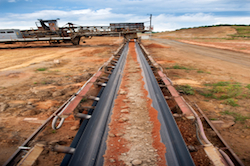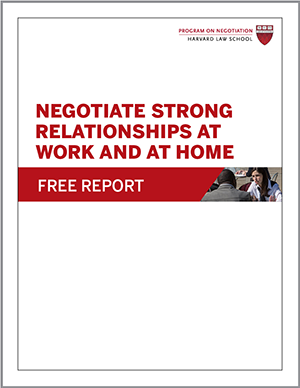
Corporations around the world are being pressed by their shareholders to do a better job of taking local concerns into account when they initiate mineral extraction projects. Indeed, both stakeholders and risk managers are demanding this. Many companies are now systematically assessing the concerns of a wide range of stakeholders and seeking to demonstrate (in annual reports to their shareholders) that they are taking their responsibilities seriously.
A great many mineral extraction disputes occur because multinational and national companies purchase concessions or apply for mining permits, but make little or no contact with relevant local governments, civil society or community groups before they begin work. Development impacts surprise and upset local interests. More up-front interaction with these groups — and a genuine effort to understand and respond to their concerns — could minimize much of the damage that triggers demonstrations and concerted campaigns against mineral extraction projects in Latin America.
Many countries (and international law) now require “Free, Prior Informed Consent (FPIC) by indigenous communities likely to be affected by proposed activities on their lands.Leading mining, oil and gas companies (and their investors) now recognize that the irresponsibilities for community engagement – including FPIC — must be taken seriously. That recognition now provides greater traction for local groups who are usually put in a position of having to oppose whatever is happening (without their consent) because they are were not given a chance to make constructive suggestions or stipulate their concerns beforehand.
Global (and stockholder) pressure on major companies to take their responsibilities for stakeholder engagement seriously can provide a new source of leverage for governments and communities. Both should be able to engage mining project developers and investors in a dialogue before concessions are granted and infrastructure investment decisions are made. Governments can insist on seeing evidence of genuine offers to collaborate with local interests before allowing concessions or licenses to be activated. Certainly, multilateral lending institutions ought to demand evidence of such efforts before funding mineral extraction projects.National governments should support the involvement of professional mediators to help facilitate such local conversations in an even-handed way. They can cover the cost out of the substantial royalties that mining companies are required to pay for permission to mine or drill.
Alternative Dispute Resolution: All Sides Benefit When Joint Fact-Finding and Community Benefit Agreements Are Put in Place.
There is great value to both companies and communities from conducting joint fact-finding on social and environmental impacts, both before projects have begun and after they are underway. Such joint assessments should be seen as value-creating moves. That is, they should be used to define in measurable ways what the impacts of development are likely to be, to decide how adverse effects will be minimized and mitigated, and to establish benchmarks that both the company and local stakeholders can use to gauge the performance of the mining companies involved. Being explicit in this way will help companies clarify the baseline against which their operations should be assessed, and reduce the risk that local stakeholders will see mining operations as the source of all the problems in the region. Joint fact-finding can also provide a basis for national and regional governments to insist that companies take appropriate action to hold the impacts of their mining operations to an absolute minimum. Regardless of how many jobs are created or how much tax revenue is generated, there should be a “cap” on the social and environmental impacts that mining or mineral extraction projects are allowed to have. Contingent obligations to mitigate and compensate, if caps are exceeded, should be spelled out beforehand.
Social and Environmental Impact Assessments (SEIAs) are required in most countries in Latin America. The preparation of SEIAs can provide a context for the kind of joint fact finding I am talking about. Beyond joint fact finding, mining companies can and should offer to work with representative local, regional and national stakeholder groups, with the assistance of a neutral mediator, to negotiate what might be called “Community Benefit Agreements.” These should take the form of contracts that commit the company to meet pre-specified impact mitigation and compensation requirements (based on agreed upon data and forecasts generated jointly with federal, regional and local officials and the heads of civil society groups).
They should also protect the reputations and limit the liabilities of companies that meet regulatory standards and live up to their commitments to the community. Right now, most company-community consultation processes produce nothing more than justifications for what industry already has in mind. There are ways, though, in which both government permitting processes and community stakeholder engagement can be used to inform site-specific community benefit agreements that governments could then enforce.
Alternative Dispute Resolution: The Missing Ingredient in Too Many Mining Disputes is Trust.
It is important for mining companies to build trust with local governments and communities before they begin work. If good working relationships are developed and maintained, whatever problems emerge can be handled expeditiously. In the absence of trust, however, it is quite common for all sides to assume the worst about everyone. This causes conflict to escalate. When there is no trust, even reasonable offers to make amends or put things right are likely to be rejected.
There are two keys to building trust. The first is to “say what you mean.” If you have bad news to deliver, don’t try to sugar-coat it. If there are organizational, legal, financial or other limits on what a company can offer, it should make those clear. The company’s representatives must begin this practice from the first day they come into contact with community stakeholders, and must maintain consistency throughout the process of exploration, development and operations. Each and every miscommunication will cost the company dearly in lost trust and damaged relationships. The second key is to “mean what you say.” Whenever anyone, whether motivated by a desire to “help” or not, makes promises they can’t keep, that undermines trust. Once it becomes clear the a promise was not genuine, trust is lost. It is extremely difficult to reestablish trust once it has been lost.
Companies make things worse when they do not ensure alignment between what their community engagement team in the field is saying and what corporate headquarters is ultimately willing to do. Often, companies will hire locals to represent them. These new staff members are likely to be sympathetic to the neighbors with whom they now have to deal in a new role. When they promise to make best effort to get headquarters to be responsive, however, and then fail, local attitudes toward both the community engagement team and the parent company are likely to sour immediately. Companies must make sure that all staff representing them in the field understand exactly what they can and can’t commit.
Grievance-handling mechanisms, while important inside most major companies, areoften poorly linked to the company’s broader strategy and practice of stakeholder engagement. Before any and all mineral extraction projects begin, local grievance-handling mechanisms should be in place. Ideally, these should be part of an overallcommunity engagement plan, spelling out who the point of contact is, what the company’s promises are with regard to minimizing social and environmental impactsand maximizing benefits,and what penalties they are prepared to have enforced if they violate the terms of their agreements. These should be signed off on by governmentofficials who are empowered to make sure they are enforced.
Alternative Dispute Resolution: Collaborative Adaptive Management is Now Best Practice.
Wherever possible, joint implementation of mineral extraction projects (however large or small) should be the goal. All mining operations are likely to have unintended effects. Close monitoring of social and environmental impacts, by joint teams of company staff, public officials and non-governmental representatives should be par for the course. This will allow adjustments in scheduling, operations and mitigation in response to timely and trusted information. Small scale experiments are also desirable. When stakeholders are not really sure what the full effects of a certain mining procedure will be, a small scale (controlled) experiment, monitored jointly, can be extremely valuable.
Collaborative adaptive management requires neutral assistance.That is, all the relevant parties should help to choose someone to facilitate the kinds of joint monitoring and adjustment efforts I have described. Management by non-partisan professionals makes it easier to build and maintain trust.
Conflicts surrounding mineral extraction in Colombia are substantial and growing, especially as project scale increases. For the foreseeable future, oil, gas, coal and other mining activities will constitute a substantial portion of the national economy. That does not mean, though, that better ways cannot be found of making site specific decisions about particular mining operations. New international norms for corporate stakeholder engagement provide a foothold for the national government, indigenous communities and environmental advocates to hold extraction companies accountable.
Joint fact finding requirements, overlaid on top of existing laws regarding the allocation of mining rights and responsibilities could help to build trust and engage local governments and other affected communities in conversations before mining operations begin. These could lead to the negotiation of formal Community Benefit Agreements with clear caps on allowable levels of impact along with contingent mitigation and compensation requirements if negotiated caps are violated. Trust building will be enhanced if companies commit to collaborative adaptive management, or CAM. CAM assumes that project impacts will change over time in unexpected ways. And, unexpected interactions with other land management, economic development and conservation efforts will need to be addressed. Putting monitoring and dispute handling arrangements in place beforehand is the best way to proceed.Nothing that I have suggested requires laws to be changed or new laws to be enacted.Companies and communities can proceed in the ways I have described on a voluntary basis, with explicit links between their agreements and governmental permitting and regulatory requirements. Even in cases where governments are not willing or capable to enforce company-community agreements, the company’s recognition that its social license to operate depends on effective stakeholder engagement, and the community’ recognition that there is potential for mutual gains through good faith negotiation and partnership, can generate strong commitments to follow through on both sides.In short, in Colombia and around the world, taking a mutual gains approach to stakeholder engagement can help both companies and communities minimize impacts and maximize benefits from mining operations.
Originally published on Consensus Building Approach, “Corporate Stakeholder Engagement and Mineral Extraction in Columbia,” by Lawrence Susskind, MIT professor and Head of the Environmental Policy Group in the School of Architecture and Planning and Program on Negotiation at Harvard Law School faculty member.
Originally published May 2012.






Thank you for your insightful article on mineral extraction in Columbia. The Alberta Energy Regulator in Alberta Canada has an ADR program that works with Energy companies and landowners and Indigenous Peoples in Alberta that are in dispute regarding proposed (prior to the facilities being built and sometimes before the application has been submitted) wells, pipelines and facilities. Here is the link to more information. http://www.aer.ca/applications-and-notices/alternate-dispute-resolution